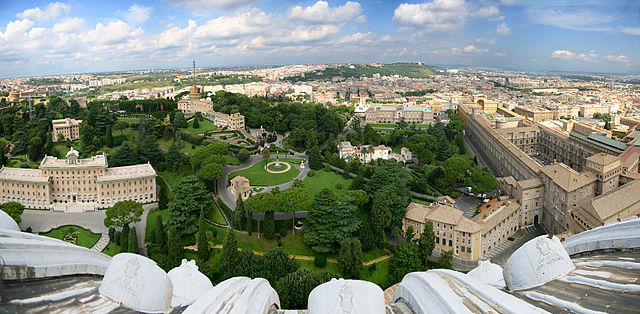Pope Paul VI was head of the Catholic Church and sovereign of the Vatican City State from 21 June 1963 to his death in August 1978. Succeeding John XXIII, he continued the Second Vatican Council, which he closed in 1965, implementing its numerous reforms. He fostered improved ecumenical relations with Eastern Orthodox and Protestant churches, which resulted in many historic meetings and agreements. In January 1964, he flew to Jordan, the first time a reigning pontiff had left Italy in more than a century.
Official portrait, 1969
Pope Paul VI
Montini on the day of his ordination in 1920.
Montini photographed alongside Pope Pius XII during his service at the Secretariat of State
Vatican City, officially the Vatican City State, is a landlocked sovereign country, city-state, microstate, and enclave within Rome, Italy. It became independent from Italy in 1929 with the Lateran Treaty, and it is a distinct territory under "full ownership, exclusive dominion, and sovereign authority and jurisdiction" of the Holy See, itself a sovereign entity under international law, which maintains the city-state's temporal power and governance, diplomatic, and spiritual independence. The Vatican is also a metonym for the pope, Holy See, and Roman Curia.
Vatican City
The Vatican obelisk in St. Peter's Square was brought to Rome from Egypt by Caligula
Musicians of the British Army's 38th (Irish) Brigade playing in front of St. Peter's Basilica in June 1944
View of St. Peter's Square from the top of Michelangelo's dome








